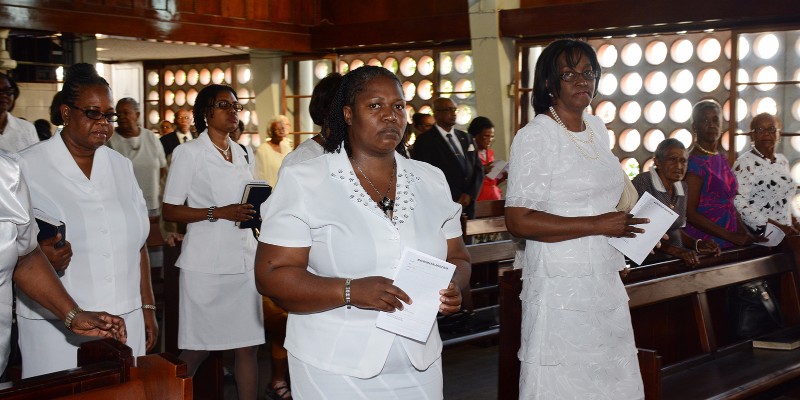History of the Church

History of the Church
The St. Paul's United Church, known to many at the time as "The Kirk", began in Montego Bay, St. James, in 1841. On the 29th of April of that year, the Rev. James Denniston, a Scottish Minister who was serving in Jamaica, laid the foundation of the St Paul's Presbyterian Kirk. The construction of the Sanctuary then commenced. The work lasted approximately two year, and on the 17th of March, 1843, the first worship service was held within the walls of the Church.
In the years that followed the congregation moved slowly through the stages of mission Charge and it was in 1943 that the first mission was launched at Salt Spring.
After witnessing to the people in Montego Bay and its environs for one hundred and fourteen years, disaster struck. On March 1, 1957 there was a great earthquake which damaged the Sanctuary beyond repair and it had to be demolished. Reconstruction of the Church Hall began in 1958 and was completed and dedicated on April 23, 1957. The Church Hall was named "The John Calvin Memorial Hall" in memory of John Calvin, a French Theologian, and one of the leaders of the reformed churches whose dogma forms the basis of Scottish Presbyterianism. Divine worship service and other activities were held in the Church Hall for the next three years and eight months.
On February 20th, 1961 the members reconstructed the Sanctuary. The first cornerstone was laid by the Rt Rev. J.H.S Burleigh, D.D., Moderator of the Church of Scotland and the second cornerstone by Miss Christine Corinaldi in honour and memory of Rev. Adam Thomson, Minister of the Church from 1850-1897.
During 1961 and 1962, the congregation worked hard under the leadership of Rev. Henry Godfrey Williams to construct the new Sanctuary. The St. Paul's Presbyterian Church experienced a rebirth in the same year Jamaica became an independent nation. On the 13th of December, 1962, the new Sanctuary had its opening ceremony and the building was dedicated to the service of God.
The architectural style of the new Sanctuary was relevant to the era in which it was built. An outstanding feature is the high roof. The weathervane/directional sign atop of the steeple is an added attraction to visitors as well as residents. The brick stones used as decoration, the pulpit, the panels at the front of the balcony and the round groove mahogany columns that adorn the Sanctuary are part of the fixtures of the old Sanctuary which were preserved. The dove with the olive branch on top the pulpit revives the memory of the biblical story of the flood in Genesis chapter 8. The Sanctuary, built to accommodate five hundred persons, is a historic landmark in Montego Bay.
The St. Paul's Presbyterian Church became St. Paul's United Church on December 1, 1965 . The journey began as far back as the 1880s when efforts were made to bring about union between the Presbyterian and Congregational Churches operating in Jamaica. The first complete step was made on December 1, 1965 when the Presbyterian Church in Jamaica and the Congregational Union of Jamaica became one Church: the United Church of Jamaica and Grand Cayman. On December 13, 1992, the United Church in Jamaica and the Cayman Island was formed following a historic ceremony held on the grounds of Sabina Park in Kingston, Jamaica. The ceremony marked the union of the Disciples of Christ in Jamaica and the United Church of Jamaica and Grand Cayman. It was also another step in a journey to fulfil, what we believe, is God's will for the life and witness of His Church. St. Paul's United Church played an integral role in this journey as members were engaged in discussions at the local and Synodical levels.
